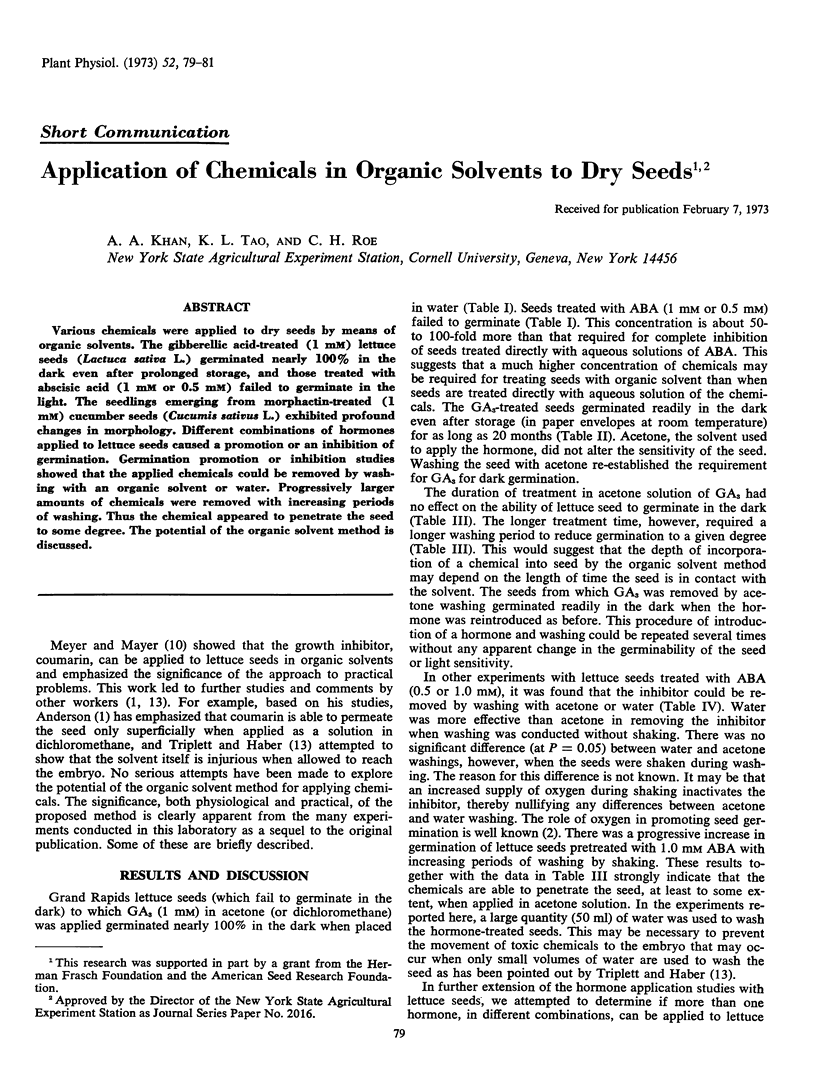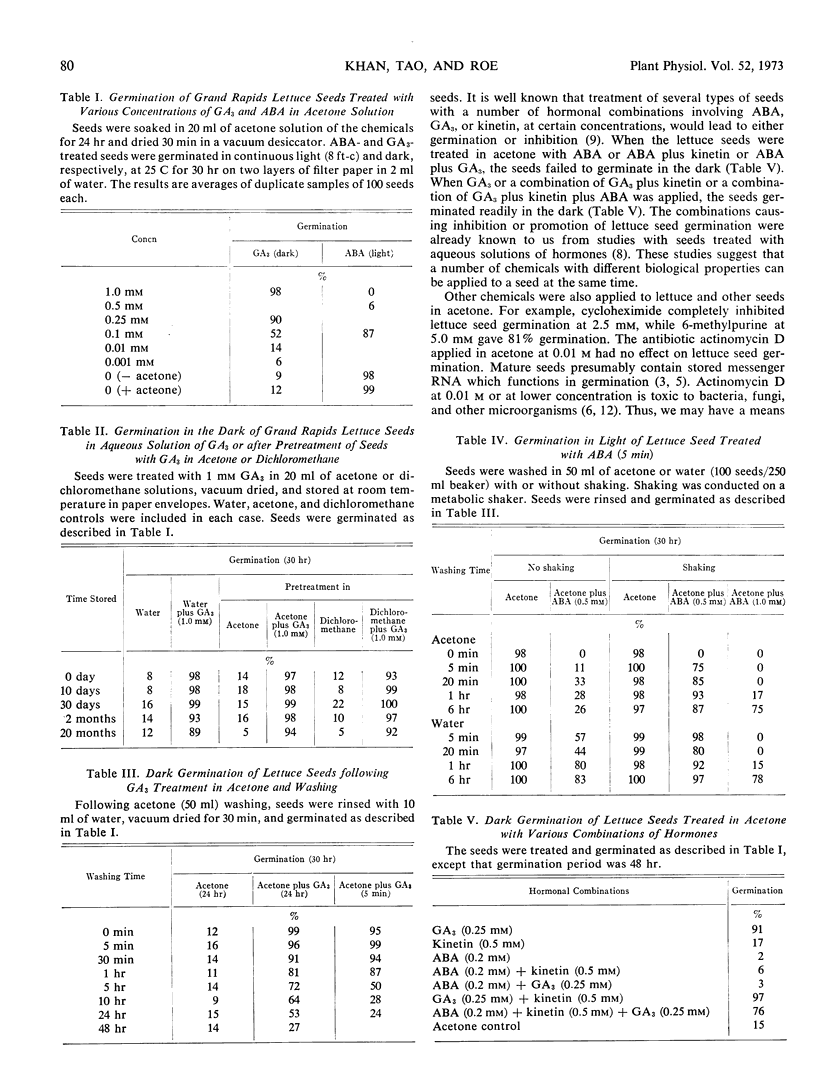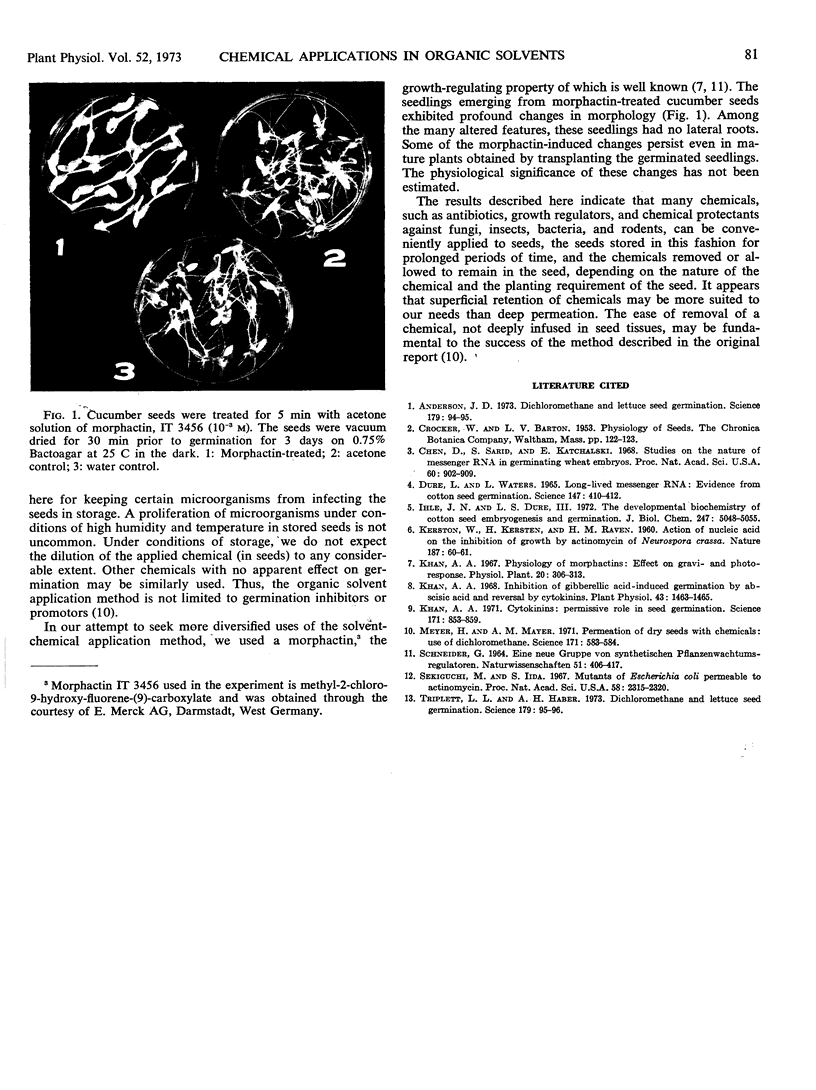Abstract
Various chemicals were applied to dry seeds by means of organic solvents. The gibberellic acid-treated (1 mm) lettuce seeds (Lactuca sativa L.) germinated nearly 100% in the dark even after prolonged storage, and those treated with abscisic acid (1 mm or 0.5 mm) failed to germinate in the light. The seedlings emerging from morphactin-treated (1 mm) cucumber seeds (Cucumis sativus L.) exhibited profound changes in morphology. Different combinations of hormones applied to lettuce seeds caused a promotion or an inhibition of germination. Germination promotion or inhibition studies showed that the applied chemicals could be removed by washing with an organic solvent or water. Progressively larger amounts of chemicals were removed with increasing periods of washing. Thus the chemical appeared to penetrate the seed to some degree. The potential of the organic solvent method is discussed.
Full text
PDF


Images in this article
Selected References
These references are in PubMed. This may not be the complete list of references from this article.
- Anderson J. D., Triplett L. L., Haber A. H., Meyer H., Mayer A. M. Dichloromethane and lettuce seed germination. Science. 1973 Jan 5;179(4068):94–96. doi: 10.1126/science.179.4068.94. [DOI] [PubMed] [Google Scholar]
- Chen D., Sarid S., Katchalski E. Studies on the nature of messenger RNA in germinating wheat embryos. Proc Natl Acad Sci U S A. 1968 Jul;60(3):902–909. doi: 10.1073/pnas.60.3.902. [DOI] [PMC free article] [PubMed] [Google Scholar]
- DURE L., WATERS L. LONG-LIVED MESSENGER RNA: EVIDENCE FROM COTTON SEED GERMINATION. Science. 1965 Jan 22;147(3656):410–412. doi: 10.1126/science.147.3656.410. [DOI] [PubMed] [Google Scholar]
- Ihle J. N., Dure L. S., 3rd The developmental biochemistry of cottonseed embryogenesis and germination. 3. Regulation of the biosynthesis of enzymes utilized in germination. J Biol Chem. 1972 Aug 25;247(16):5048–5055. [PubMed] [Google Scholar]
- KERSTEN W., KERSTEN H., RAUEN H. M. Action of nucleic acids on the inhibition of growth by actinomycin of Neurospora crassa. Nature. 1960 Jul 2;187:60–61. doi: 10.1038/187060a0. [DOI] [PubMed] [Google Scholar]
- Khan A. A. Cytokinins: permissive role in seed germination. Science. 1971 Mar 5;171(3974):853–859. doi: 10.1126/science.171.3974.853. [DOI] [PubMed] [Google Scholar]
- Khan A. A. Inhibition of Gibberellic Acid-induced Germination by Abscisic Acid and Reversal by Cytokinins. Plant Physiol. 1968 Sep;43(9):1463–1465. doi: 10.1104/pp.43.9.1463. [DOI] [PMC free article] [PubMed] [Google Scholar]
- Meyer H., Mayer A. M. Permeation of dry seeds with chemicals: use of dichloromethane. Science. 1971 Feb 12;171(3971):583–584. doi: 10.1126/science.171.3971.583. [DOI] [PubMed] [Google Scholar]
- Sekiguchi M., Iida S. Mutants of Escherichia coli permeable to actinomycin. Proc Natl Acad Sci U S A. 1967 Dec;58(6):2315–2320. doi: 10.1073/pnas.58.6.2315. [DOI] [PMC free article] [PubMed] [Google Scholar]



